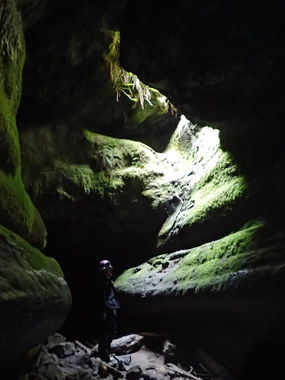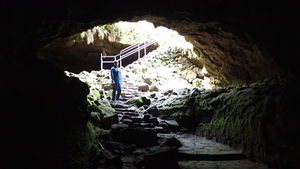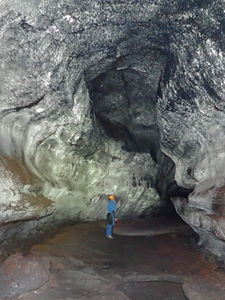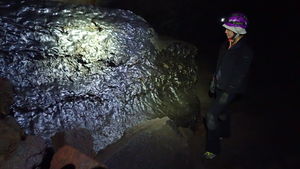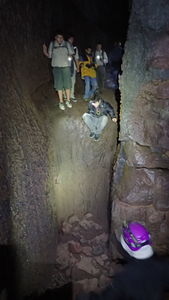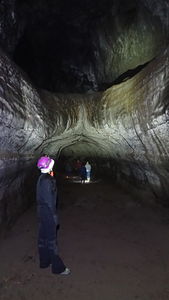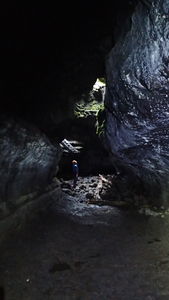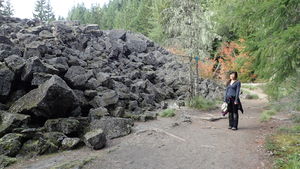Ape Cave
| Rating: | |||||||||||||||||||||||||||||||
|---|---|---|---|---|---|---|---|---|---|---|---|---|---|---|---|---|---|---|---|---|---|---|---|---|---|---|---|---|---|---|---|
| | Difficulty:Cave 2A II (v1a1 II) Raps:0
Red Tape:Permit required Shuttle:None Vehicle:Passenger | ||||||||||||||||||||||||||||||
| Location: | |||||||||||||||||||||||||||||||
| Condition Reports: | |||||||||||||||||||||||||||||||
| Best season: | All;BEST in Jun;Sep
|
||||||||||||||||||||||||||||||
| Regions: | |||||||||||||||||||||||||||||||
Introduction[edit]
Ape Cave is the third longest contiguous lava tube (2.5mi long) in the North America. Located at the base of Mount Saint Helen, the cave is broken in two sections:
- Lower Ape Cave: 1.5 miles roundtrip, easy walking, good for families, in and out the same way
- Upper Ape Cave: 3 miles roundtrip, more challenging with several climbs, option to return by surface trail
Ape Cave is extremely popular on weekends, particularly the lower section. The Forest Service administers Ape Caves as a public attraction, consequently you're likely to find many underprepared or new cavers as well as trash and inappropriate behavior. This might be a good opportunity for some friendly education. The cave is fabulously long; even experienced cavers might enjoy the experience. Come mid-week or in winter for more solitude. The main Ape Cave Parking lot is generally closed in the winter season, so you'll need to park at the nearby Trail of Two Forests and hike or snowshoe in. (Update: cave may have been gated which makes winter entry impossible.)
Approach[edit]
From the parking area, you have two choices:
- Enter the cave directly via the sinkhole and metal ladder. (This is the easiest way to the lower portion of the cave.)
- Follow a well-maintained trail about 1mi to the upper entrance. You can then descend through the cave to the main entrance. This trail may be harder to follow in winter.
Descent[edit]
The caves are touristic but non-commercial, so bring several light sources, gloves, and a helmet. Its advantageous to bring a powerful light. The dark lava absorbs more light than light-colored limestone caves.
Be prepared for cold, the cave stays at constant temperature of 42F even in summer.
You have to climb a few small lava waterfalls in Upper Ape Cave. They are fun, and the lava provides good footing, but can be difficult for small children.
Exit[edit]
Follow a trail marked with blue markers to come back from Upper. Or you can just go back underground.
The lower portion of the cave is a dead end, so it's an out & back from the main entrance.
Red tape[edit]
As of 2021, Ape Cave now requires a reservation fee with a timed entry. Additionally, a NW Forest Pass is required to park at the trailhead. Park 0.25mi away and you don't need a pass. (Trail of Two Forests also requires a NW Forest Pass.)
Beta sites[edit]
- https://www.fs.usda.gov/recarea/giffordpinchot/recarea/?recid=40393
- http://www.portlandhikersfieldguide.org/wiki/Ape_Cave_Hike
 HikeArizona.com : Ape Cave
HikeArizona.com : Ape Cave
Trip reports and media[edit]
Background[edit]
Cave gets its name from the reports of Sasquatch in the area.
